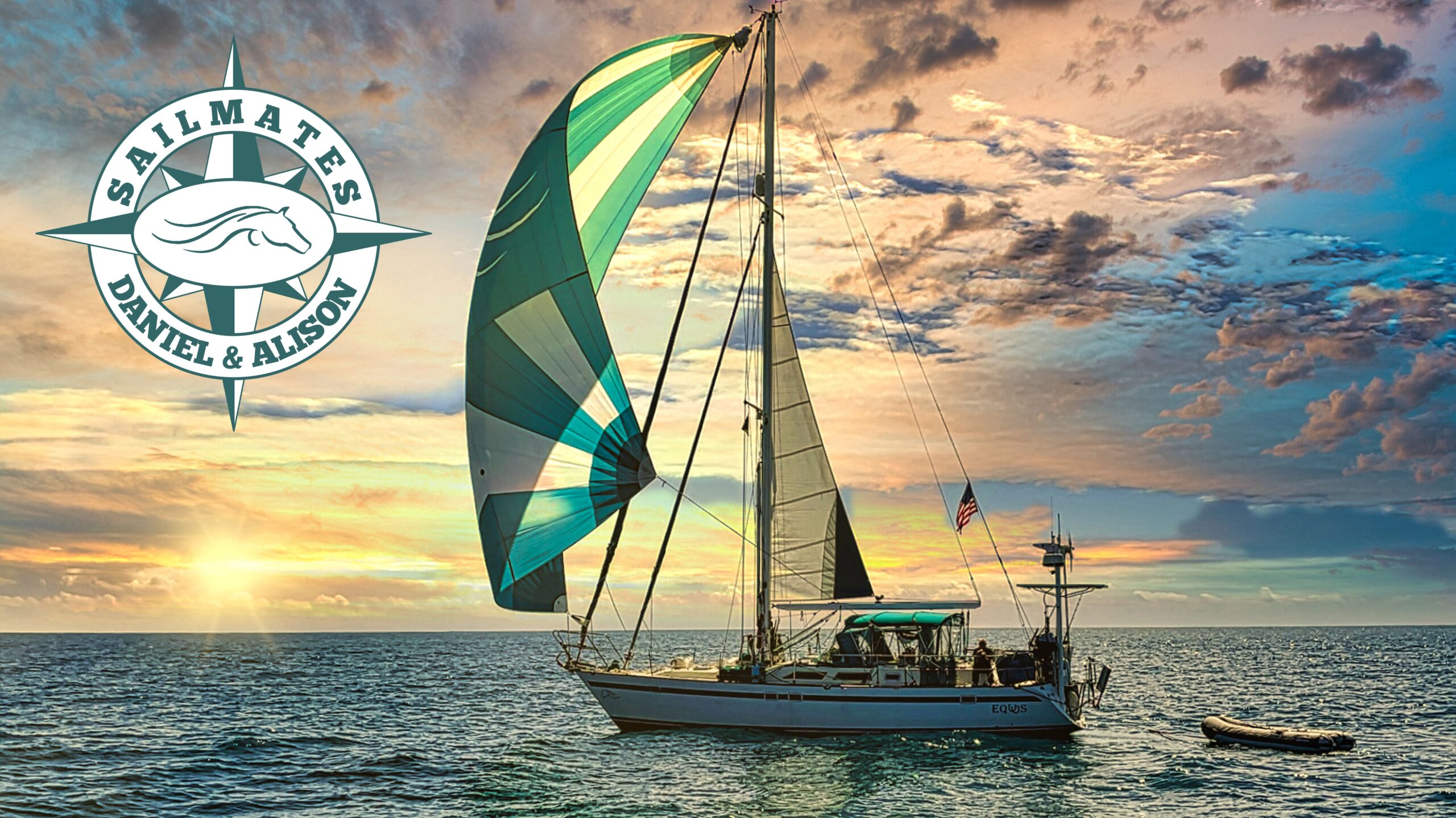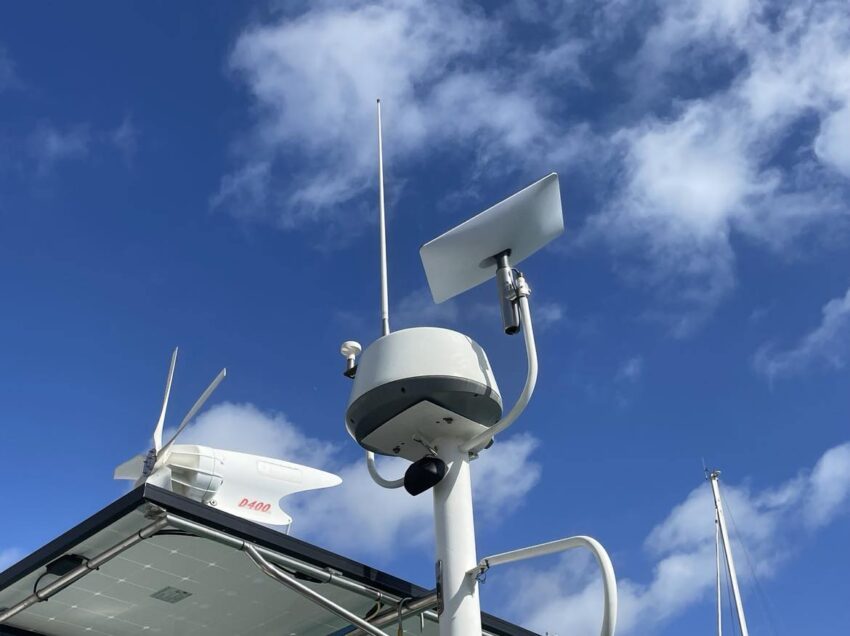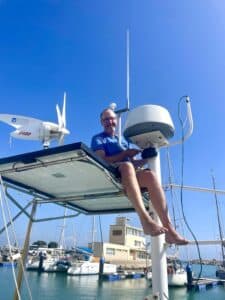
Our research on cruising was extensive. We took a 1,000-mile training passage with John Kretschmer. We attended boat shows and seminars nationwide for five years learning about all matters related to equipping a boat for safe sailing. My husband, a Kings Point Merchant Marine, equipped with dual degrees in marine engineering and marine transportation, worked as a Navy contractor for 25 years dealing with ships and communication systems.
When Facts and Realities Collide
One would think things would have gone smoothly for us, being so well-prepared and all. All I can say is that we got the crap kicked out of us on our very first ocean crossing and had to turn back after we were three days out and 500 miles from shore. Why might you ask, did this occur when we were so well prepared? Ever heard the saying, “You don’t know what you don’t know until you know it?”
The reason for our failure had something to do with Mother Nature. We did get caught between two fronts. The seas were 20 feet, the winds in the high 30’s, and the wave frequency very short because of the two storms colliding. The waves crashed relentlessly on our bow causing damage to our boat. We couldn’t even heave-to because we would have drifted into worse weather. The other reason is that our weather updating system was inadequate.
To make a long story short, we did make it back to shore, made our repairs, and continued our journey. The real-life lesson we learned was that staying connected, being able to get updated weather forecasts, and having the ability to communicate with those on shore, is one of the most important aspects of sailing.
After our experience, we upgraded our equipment and made sure we had an Iridium Go and reliable service. This worked fairly well for the next four years, and then came Starlink. Less than a year ago, we paid to have our satellite phone repaired and upgraded. Now it seems that there is a better option for data and service for blue water cruising. We were skeptical at first, but then we had sailing friends who took the leap to Starlink. They love it.
Sure enough, everyone we talked to that installed the system had great reviews. After some research, we bit the bullet and got our very own “dishy.” You can spend big bucks and get a dish system designed for yachts, or, you can go much less expensive, and for around $600 you can adapt the RV dish system for your boat. That’s the route we chose.
A Starlink System Tailored for Blue Water Cruisers
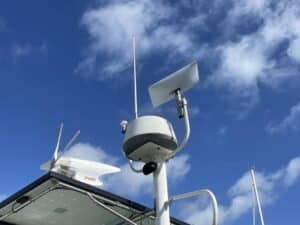
As a blue water cruiser, you should be familiar with modifying and repairing just about everything on your boat. You won’t always be in a location where you can hire someone else to do the work. Knowing your boat systems, having diagrams of wiring, and being able to repair and upgrade is essential. Adding Starlink is not difficult. It is a job you can do yourself, but you do need to be comfortable with the basics of your electronic systems.
Installing Starlink on Your Boat
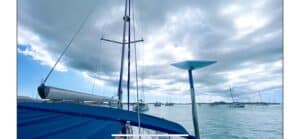
The installation process is surprisingly straightforward. It only took us a day to run the wires from the cabin to the solar panel arch on our stern where we mounted the dish. The proprietary cable connecting the dish to the modem is made to create a weather-tight seal and, as such, is larger than a standard ethernet connection. A ¾ inch hole will be required if you don’t want to cut the cable. The dish itself is compact and designed to be easily mounted on your boat.
Many cruisers choose to install the dish on a pole attached to the stern rail. Others mount it on their arch system away from their mast
To secure the dish, we mounted a fishing rod holder, with a hole drilled in the bottom for the cable, to the pipe. The Starlink dish is designed to fit into a 1-1/4 inch mount. The upper shaft is slightly larger so, depending on the rod holder or pipe used, you will want to use tape to make a tight fit. We also drilled and tapped the rod holder to reduce the depth and installed a set screw for added security.
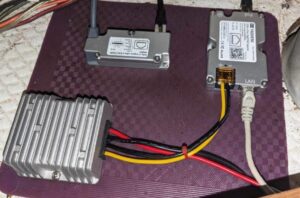
We decided to use a 12-volt modem and separate power supply to do a single conversion from 12 to 48 volts. This solution requires a POE injector and ethernet converter (all available from Amazon). These units were installed midship near our solar panel controllers which was, coincidentally, also the extent of the Starlink cable. From there, a standard CAT 6 ethernet cable was run to our modem along with a power cable to our 12v power panel.
Cost and Data Packages for Starlink
As with any technology, it’s important to consider the cost. The Starlink equipment is priced reasonably, making it accessible for most blue water cruisers. The prices range from $600 to $2500 for the equipment. The subscription costs vary, depending on the data package you select. The fees range from $90 to $250 per month. Packages are designed to accommodate different usage levels, from light browsing to continuous connectivity.
At a minimum, cruisers will need the ROAM subscription originally designed for Recreational Vehicles (RVs). There are both local and international ROAM subscriptions. Starlink subscriptions are based on region, aka continent. Being land-based they will only work a limited mileage from land. The cost also varies by country so research is advised. ROAM subscriptions are unlimited data.
Ocean crossers will require the MARINE MOBILE subscription. This subscription has global coverage with 50 Gb of data at a cost of $250/month and $2 per Gb after.
All subscriptions are monthly and can be changed at any time. Be advised that not all subscriptions are available everywhere and changing regions will require extra steps.
In addition to our Starlink, we plan to have a limited data satellite phone package as well, just in case, covering the rule in blue water sailing, ‘redundancy, redundancy, redundancy.’
Real-Life Experiences
To provide a glimpse into the world of marine Starlink, let’s share a few stories from blue water cruisers who’ve embraced this technology:
- Island Hopping: Mark and Emily, a sailing couple exploring the Caribbean, used Starlink to stay connected with family and friends while island hopping. They praised the ease of installation and the consistent, high-speed internet even in remote anchorages.
- Safety at Sea: John, a solo circumnavigator, considers Starlink a crucial safety feature. The real-time weather updates and communication capabilities have helped him navigate treacherous conditions and stay in touch with emergency services.
- Business on Board: Sarah, a freelance writer, continued her work while cruising in the Mediterranean. Starlink allowed her to submit articles and stay connected with clients, proving that you can have your adventure and maintain your livelihood.
- Brian and Shelly on Staying Connected: their service was consistent during their crossing from the BVIs to Europe. They loved being able to make posts and show videos of their progress as they crossed the Atlantic.
It makes sense that as technology continues to improve, we embrace the opportunity to upgrade the tools that make blue water sailing safer. We always assumed that during our long passages, we would not be able to connect with family and friends. Starlink is a game is a game-changer for blue water cruisers. It offers a reliable, high-speed internet connection that can enhance safety, communication, and overall enjoyment while sailing. Whether you’re an adventurer, a remote worker, or simply a sailing enthusiast, Starlink brings the world closer while allowing you to explore the far reaches of the blue waters. It’s now possible to set sail and stay connected.
Fair Winds,
Dan and Alison
S/V Equus
Sailmates.org
Want to know more about the Facts and Realities of Blue Water cruising? Take a journey through the first five years of circumnavigation with Dan and Alison.
Coming November 1st, available now for pre-order on Amazon: Riding the Waves of Reality (print copy available Nov. 1st):

